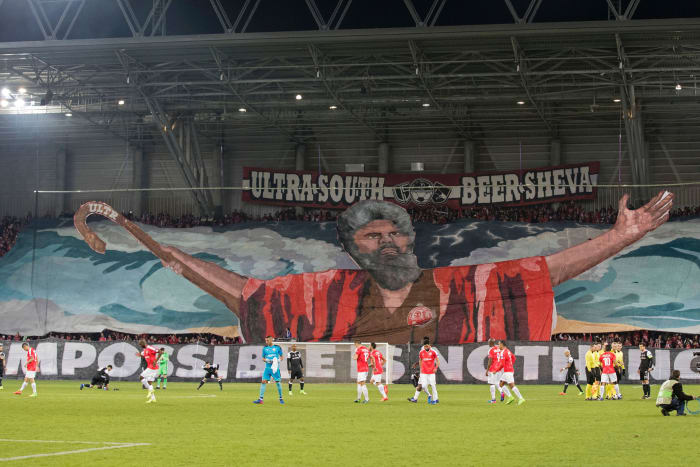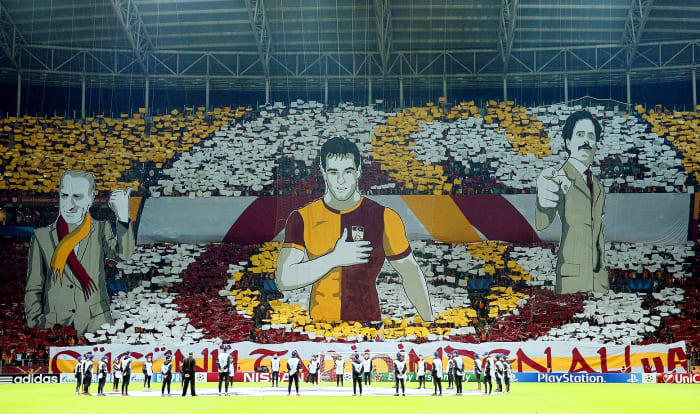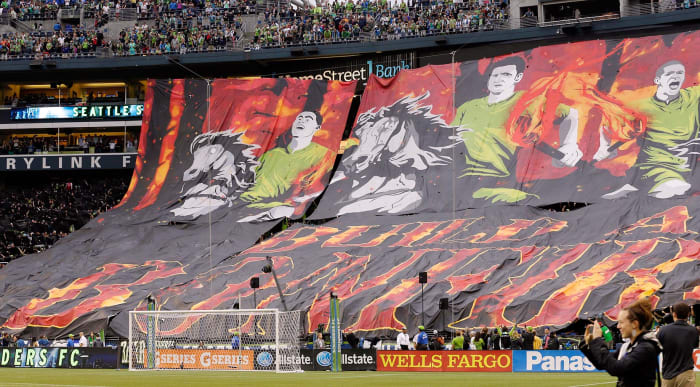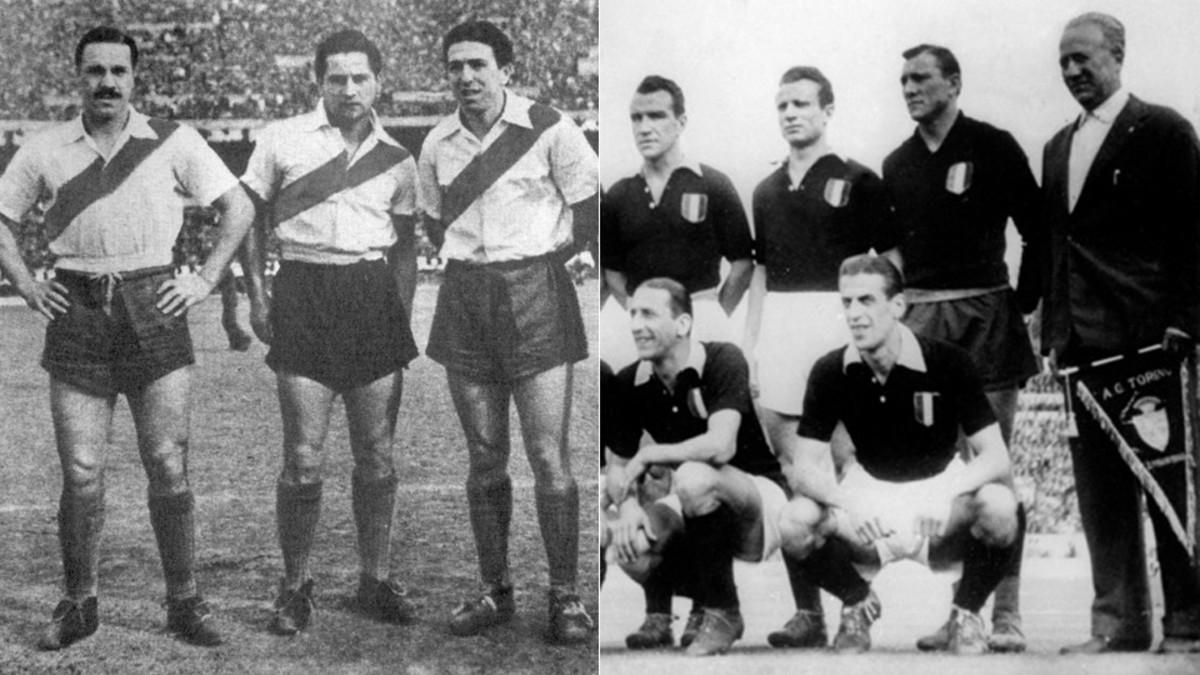
What if they met? River Plate's La Máquina, Il Grande Torino
What if?
It's a question so often posed in the realm of sports. What if a certain player wasn't suspended, traded or hurt? What if a controversial call went another way? What if a coach had called a different play? What if a certain matchup had occurred at a different time?
That last question, above the others, has piqued our interest. In light of Floyd Mayweather finally facing Manny Pacquiao this Saturday in Las Vegas, years after both boxing greats were widely considered to be at their absolute best, it got us wondering: What if two soccer titans of their era who never got the chance to meet at their peaks actually did? All week in the build-up to Mayweather-Pacquiao, Planet Fútbol will take a historical deep dive into some of the greatest teams in soccer history, why they ultimately never got the chance to meet their equals and what might have happened if they had.
We started with the Uruguay and Austria national teams of the early 1930s. Next up: Argentina's River Plate and Italy's Torino in the 1940s.
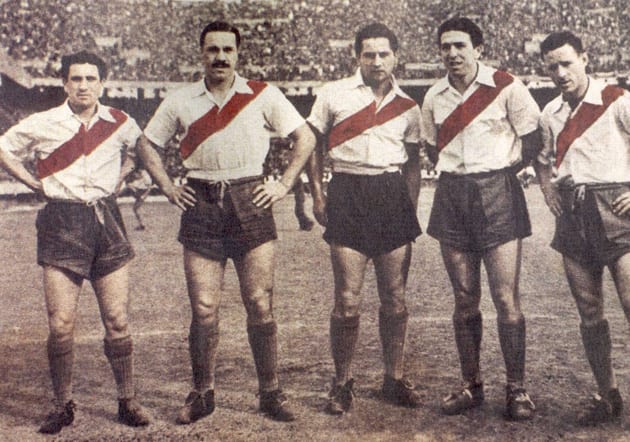
From left: River Plate's Juan C. Muñoz, José M. Moreno, Adolfo Pedernera, Angel Labruna and Félix Lousteau.
Clarín
RIVER PLATE
There is no team so revered in Argentina as La Máquina, the great River Plate side of around 1941 to 1947. They defined not only the style of the club, but also what came to be perceived as the true Argentinian style, la nuestra. They played a rough W-M shape with an attacking center half in Néstor Rossi. The front five of–reading from right to left–Juan Carlos Muñoz, José Moreno, Adolfo Pedernera, Ángel Labruna and Félix Loustau became fabled (although they only played as a quintet 18 times over a five-year period).
Returns, rematches, powerhouses mark Champions League semifinals
Rather than the two inside-forwards withdrawing as was usual in a W-M, it was Moreno and Pedernera who dropped off into the space in front of the half line. Loustau, meanwhile, patrolled the whole of the left flank, becoming known as a ‘ventilador-wing’–‘fan-wing’ (‘puntero-ventilador’ is used, but the half-English term seems more common)–because he was a winger who gave air to the midfield by doing some of their running for them.
Loustau’s running meant that the left-half could shuffle across, which in turn meant the center half–first Rodolfi and then Rossi–moving right, allowing Norberto Yácono, the nominal right-half, a more defensive brief. He became known as "The Stamp" for the way he would stick to the player he was marking.
“You play against La Máquina with the intention of winning,” said Ernesto Lazzatti, the Boca Juniors No. 5, "but as an admirer of football sometimes I’d rather stay in the stands and watch them play.”
As befits the self-conscious romanticism of the Argentinian game at the time, though, River was not a relentless winner, lifting just four titles in those seven years.
“They called us the ‘Knights of Anguish’ because we didn’t look for the goal,” said Muñoz. “We never thought we couldn’t score against our rivals. We went out on the pitch and played our way: take the ball, give it to me, a gambeta, this, that and the goal came by itself. Generally it took a long time for the goal to come and the anguish was because games were not settled quickly. Inside the box, of course, we wanted to score, but in the midfield we had fun. There was no rush. It was instinctive.”
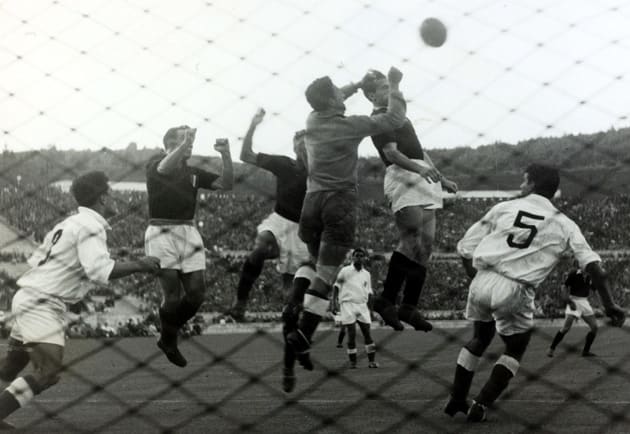
Benfica goalkeeper Pinto Machado punches the ball away under pressure from Torino's Romeo Menti, Émile Bongiorni and Valentino Mazzola a day before a tragic plane crash killed the Italian team.
Bob Thomas/Popperfoto/Getty Images
TORINO
On May 4, 1949, an airplane carrying the Torino side back from a friendly in Lisbon crashed into the monastery of Superga on a hill just north of Turin, killing all those on board and wiping out perhaps the greatest club side Italy has ever known–Il Grande Torino. With four games of the season remaining, it was already five points clear of Internazionale, its nearest rival, and was declared the champion, so completing a fifth straight league title (although there was a two-year break after the first one as football was reduced to local competitions by the war). As it turned out, its youth team went on to win those final four games anyway.
Under The Crest: Chelsea FC - What makes a world power's identity?
The coach was Egri Erbstein, a pioneering Hungarian, who had worked at the club in various capacities from 1938, aside from a spell back in Budapest during the war, when he was briefly interned in a concentration camp before escaping. It was a side written through with quality from goalkeeper Valerio Bacigalupo to the subtly gifted playmaker Valentino Mazzola. So good was that Torino that it was common for the national side to include six or seven Torino players.
On one occasion, a 3-2 win over Hungary in May 1947, there were 10 Torino players in the Italy team.
Erbstein favored a defensive center half in Mario Rigamonti, with a block of two deep-lying midfielders, Giuseppe Grezar and Emiliano Castigliani just in front of him. With Aldo Ballarin and Virgilio Maroso at fullback, that provided the platform for the former Venezia pair of Mazzola and the rapid Ezio Loik in front of them, with Romeo Menti and Pietro Ferraris wide and Guglielmo Gabetto a free-scoring center forward.
It was a balanced side, modern in its approach, but also capable of mesmerizing attacking combinations.
WHY THEY DIDN’T MEET
River Plate never played Torino for the very simple reason that they were based on opposite sides of the world. The Intercontinental Cup didn’t come about until 1960, so the only way South American teams would play against European opposition was on tours. Torino did tour Brazil and Argentina in 1914, winning one and losing two games in Argentina, but the war restricted horizons and there were few trans-Atlantic tours in the 40s.
The best guide available as to how River may have fared against European opposition comes from San Lorenzo’s European tour of 1946. El Ciclon, as that side became known, had won the Argentinian championship, finishing five points clear of River in third, and embarked on a tour over the (European) winter of 1946-47 and was hugely successful.
It began with a 4-2 defeat to Real Madrid, but soon hit its stride, beating a Spanish XI 7-5 in Barcelona, a game that prompted El Mundo Deportivo to praise its “excellent level in great football.”
Michael Bradley maintains faith in Toronto FC despite lackluster start
Intriguingly, what stood out was not the individual ability of the Argentinians, but their mutual understanding. What made La Máquina great was clearly not restricted to River: “They all play for each other,” El Mundo Deportivo enthused, “always to be found in the place where they need to be; they have such an excellent touch that they achieve with leather similar effects to a good billiards player.”
San Lorezno beat another Spanish XI 6-2 and twice beat Portuguese selections: despite the “cold, snow and intense rainfall of that winter,” El País said, San Lorenzo “caused a sensation.”
It’s not an entirely fair comparison, but Torino’s last game was a 4-3 defeat away to Benfica. As Europe recovered from the war, it probably is the case that South American football was significantly stronger. Its players were better nourished, and, at a time when football was evolving rapidly, it hadn’t had a hiatus in its development.
HOW IT WOULD'VE PLAYED OUT
Tactically, the shapes were not dissimilar, although the chances are that River would have used Yacono to try to pick up Mazzola, leaving Loustau to work the whole of the right flank and pick up Torino’s left winger, and potentially leaving space for the speed of Loik to exploit.
That, though, is assuming Torino could have gained control of central midfield, and the probability is that with Yacono offering an extra man in that area and Mazzola tied up, the power of Rossi, supported by Jose Ramos and with Aldolfo Pedernera dropping back, would have allowed River to dominate possession.
The game would then have become a battle of River’s front line against the defense of Torino, with the Italians threatening on the break, particularly down the left flank. In the end, the war would probably have been the decisive factor, and, while Torino may have had a harder edge, River would simply have outlasted Torino.


